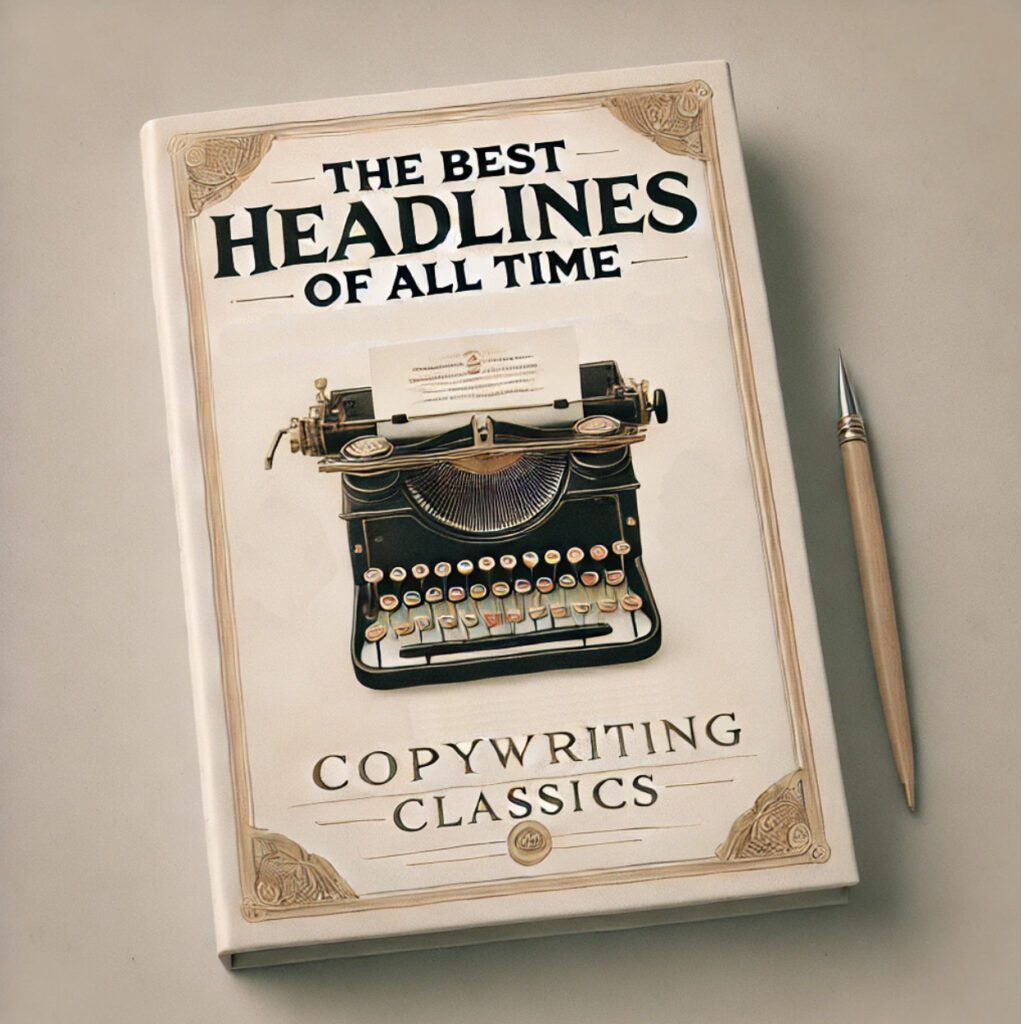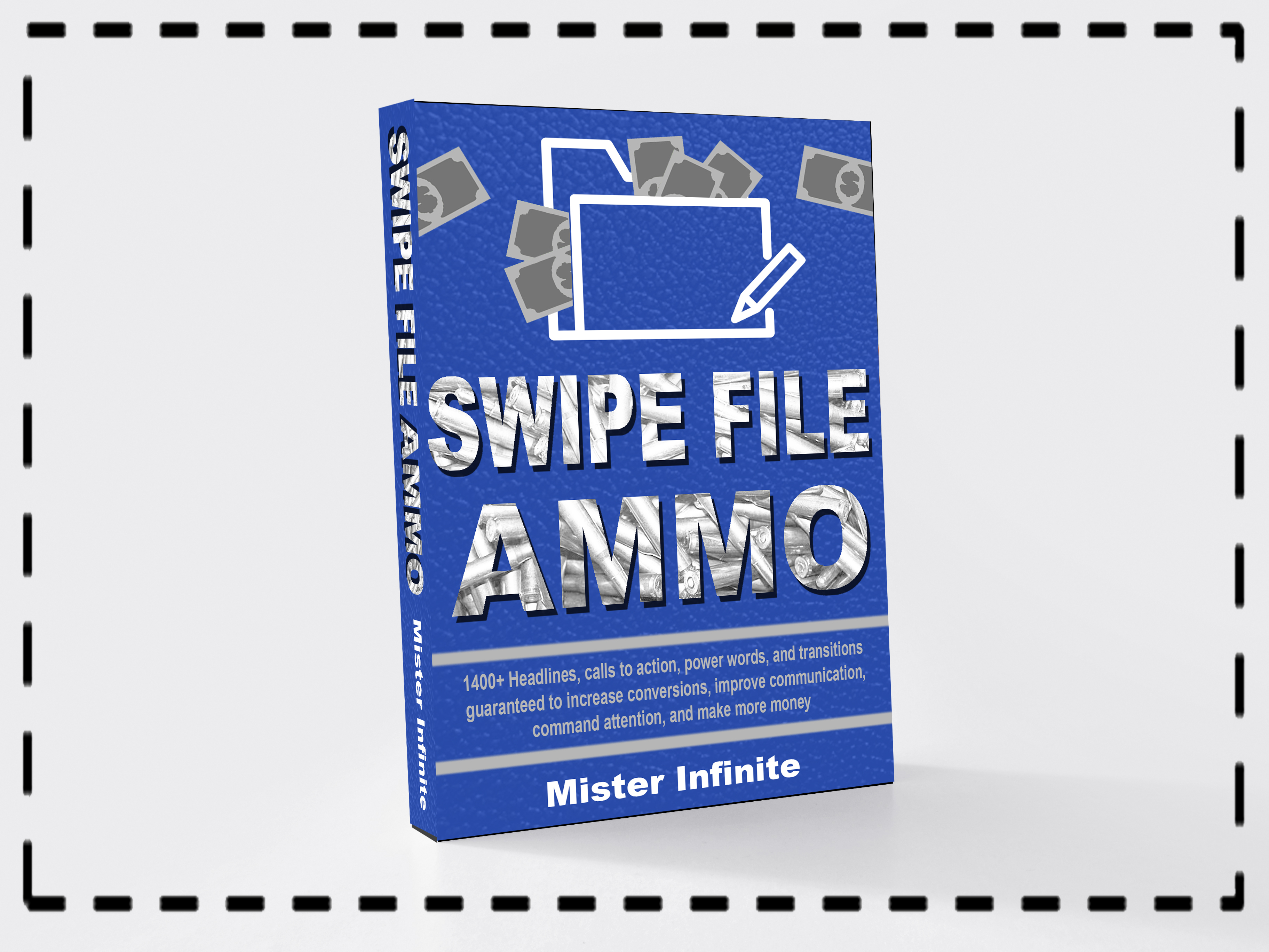Headlines are the backbone of any powerful piece of copy.
They serve as the gatekeepers of content, pulling readers in or leaving them disinterested in seconds.
The best headlines don’t just inform – they:
- Ignite curiosity
- Promise benefits
- And tap into core emotions
driving the reader to engage further.
Here’s an exploration of some of the greatest headlines in copywriting history, what makes them effective, and how to apply their techniques in modern marketing.
1. “They Laughed When I Sat Down at the Piano – But When I Started to Play!”
This famous headline, crafted by copywriter John Caples, is a classic example of the power of storytelling in copy.
It paints an intriguing picture that leads readers to wonder what happened next, effectively pulling them into the story.
By opening with a hint of mockery and then suggesting a surprising turn of events, this headline taps into the reader’s emotions – everyone has, at some point, wanted to prove others wrong or surprise them with hidden skills.
Why It Works:
- Curiosity: The reader wants to know the full story.
- Relatability: Many people have experienced doubt or ridicule and wish to overcome it.
- Transformation: The headline suggests a dramatic change, which is appealing to readers.
How to Use It: You can apply this by using narrative headlines that hint at a surprising result, especially if you can target common insecurities or aspirations your audience has.
2. “Do You Make These Mistakes in English?”
This headline, famously used in an English grammar course ad, hooks the reader with an immediate question that makes them consider their own mistakes.
The wording suggests that the mistakes are common, prompting the reader to want to check if they, too, are making them.
Why It Works:
- Curiosity: People naturally want to know if they’re making mistakes.
- Personalization: Addressing the reader directly with “you” makes it feel more personal.
- Fear of Error: Many people worry about appearing uneducated or unskilled in language, and this headline addresses that fear directly.
How to Use It: Create headlines that call out common mistakes or issues, especially in ways that make readers consider their own habits or knowledge.
3. “The Secret of Making People Like You”
This headline targets a universal desire: to be liked and socially accepted.
By positioning the information as a “secret,” the copy suggests that the reader will gain access to exclusive knowledge.
It’s straightforward yet effective because it promises a benefit everyone desires.
Why It Works:
- Universal Appeal: Almost everyone wants to be more likable.
- Intrigue: The word “secret” makes it seem like rare knowledge.
- Benefit-Driven: The headline directly highlights a desirable outcome.
How to Use It: Use headlines that offer exclusive knowledge or hidden tips, especially when they address universally desired benefits.
4. “How a Strange Accident Saved My Life”
This headline immediately captivates the reader by introducing an unusual incident with life-saving implications.
The combination of “strange accident” with “saved my life” creates a juxtaposition that begs further exploration, prompting readers to find out how something unexpected led to a positive outcome.
Why It Works:
- Mystery: The unusual combination of “strange accident” and “saved my life” piques curiosity.
- Storytelling: It suggests a narrative that readers want to follow.
- Benefit by Proxy: Readers feel that they could gain life-saving knowledge.
How to Use It: When crafting headlines, consider using unconventional twists or surprising phrases to make readers curious.
5. “Lose 30 Pounds in 30 Days!”
This headline is a masterclass in clarity and conciseness.
It promises a highly specific benefit (“lose 30 pounds”) within a defined timeframe (“30 days”), giving the reader a clear expectation of what they’ll gain.
Why It Works:
- Specificity: The headline gives an exact amount of weight and time, making it feel tangible.
- Instant Gratification: A month is a short enough time that readers feel the benefit is achievable.
- Clarity: The promise is clear and doesn’t leave readers guessing.
How to Use It: Use exact numbers and timeframes when your offer involves measurable results.
6. “Are You Man Enough to Handle the ‘Man’s Shampoo’?”
This playful headline challenges readers directly by questioning their masculinity.
It’s effective for a product targeted at men who value strength and confidence in their identity.
The challenge in the headline attracts those who identify with the brand’s ethos.
Why It Works:
- Challenge: The headline creates a playful yet bold challenge.
- Identity Appeal: It appeals to those who view themselves as “manly.”
- Emotional Trigger: It taps into pride and identity.
How to Use It: For products that target a specific identity or demographic, craft headlines that appeal to the reader’s self-image and pride.
7. “If You Can Read, You Can Cook!”
This headline speaks directly to those who may feel insecure about cooking by simplifying the process.
It suggests that no special skills are needed, lowering the reader’s barriers to entry.
Why It Works:
- Simplification: It turns a potentially intimidating skill (cooking) into something easy.
- Confidence-Building: By implying that anyone can cook, it boosts the reader’s self-belief.
- Universal Audience: It’s accessible and relevant to a wide audience.
How to Use It: When your product simplifies something complex, highlight that simplicity in your headline.
8. “Who Else Wants to Be a Millionaire?”
The phrase “Who else wants…” implies that others are already achieving the goal, triggering FOMO (fear of missing out) and encouraging the reader to join in.
This classic headline appeals to those who desire financial success and fear being left behind.
Why It Works:
- Social Proof: It subtly suggests that many people already want this.
- FOMO: It triggers a fear of missing out on an opportunity.
- Simple and Direct: The headline speaks directly to the reader’s desire for wealth.
How to Use It: If your product has broad appeal, use “Who else wants…” to tap into readers’ desire to join the crowd.
9. “Here’s a Quick Way to End Money Worries”
This headline is effective because it directly addresses a common pain point – financial stress – and promises a simple solution.
The phrase “quick way” suggests that the solution is fast and accessible.
Why It Works:
- Addresses Pain: It zeroes in on a common concern.
- Ease of Solution: “Quick way” makes the solution feel achievable.
- Universal Appeal: Money worries affect a wide audience.
How to Use It: Focus on fast, accessible solutions to major pain points in your headlines.
10. “A Little Mistake That Cost a Farmer $3,000 a Year”
By emphasizing a “little mistake” with a high cost, this headline builds curiosity and urgency.
Readers wonder what mistake could be so costly and how they can avoid making it themselves.
Why It Works:
- Curiosity: The “little mistake” invites readers to learn more.
- Fear of Loss: People want to avoid costly errors.
- Relatability: Many people can relate to making small errors with big consequences.
How to Use It: Use specific examples of minor issues with significant impacts to capture attention.
Conclusion
These iconic headlines share a few common traits: they
- Build curiosity
- Speak directly to reader needs
- And promise clear benefits.
Whether through:
- Storytelling
- Addressing fears
- Or appealing to core desires
these techniques are timeless in their effectiveness.
When crafting your own headlines, think about the transformation or benefit you offer and how you can use:
- Emotion
- Specificity
- Or curiosity
to make it irresistible.
With the right headline, you don’t just grab attention – you set the stage for deeper engagement and action.
Interested in making more sales?
Check out “Swipe File Ammo“.
It’s full of 1400+ headlines, calls to action, power words, and transitions to help increase conversions, improve communication, command attention, and make more money.
You May Also Like:
Crafting Winning Angles: The Secret to Effective Marketing
The Architecture of Sales: Building Conviction Through Structured Communication
The Art and Science of Converting Cold Traffic
Swipe File Ammo: 1400+ Headlines, Calls To Action, Power Words, and Transitions To Help Increase Con...
What Everybody Ought To Know - About Making A Swipe File
The Power of Sales Stories: 7 Transformative Narratives to Drive Success
Crafting a Winning Sales Letter: A Step-by-Step Guide
Mastering the Art of Bullets in Copywriting: Transform Readers into Engaged Buyers with These Secret...
My name is Mister Infinite. I've written 600+ articles for people who want more out of life. Within this website you will find the motivation and action steps to live a better lifestyle.


